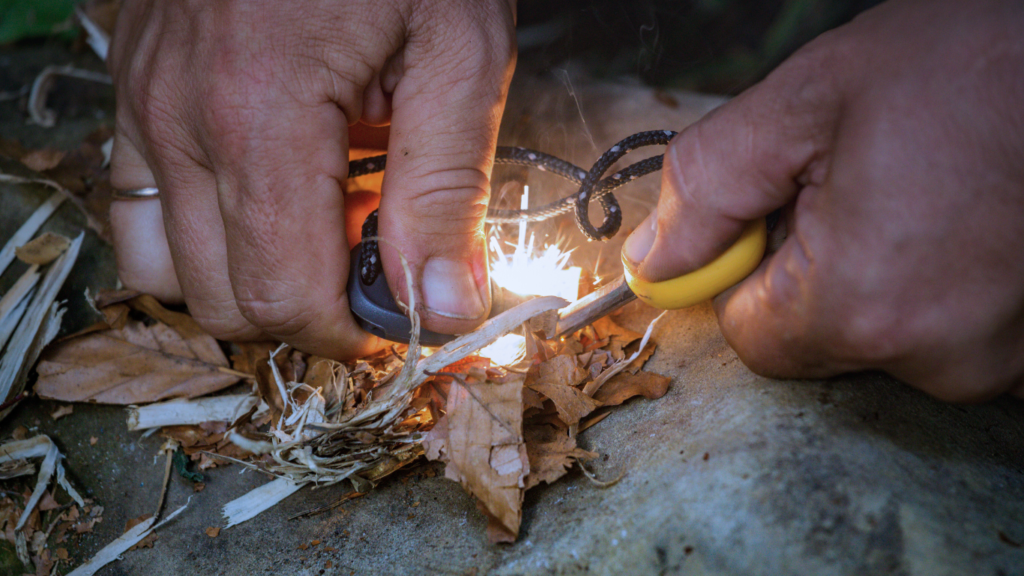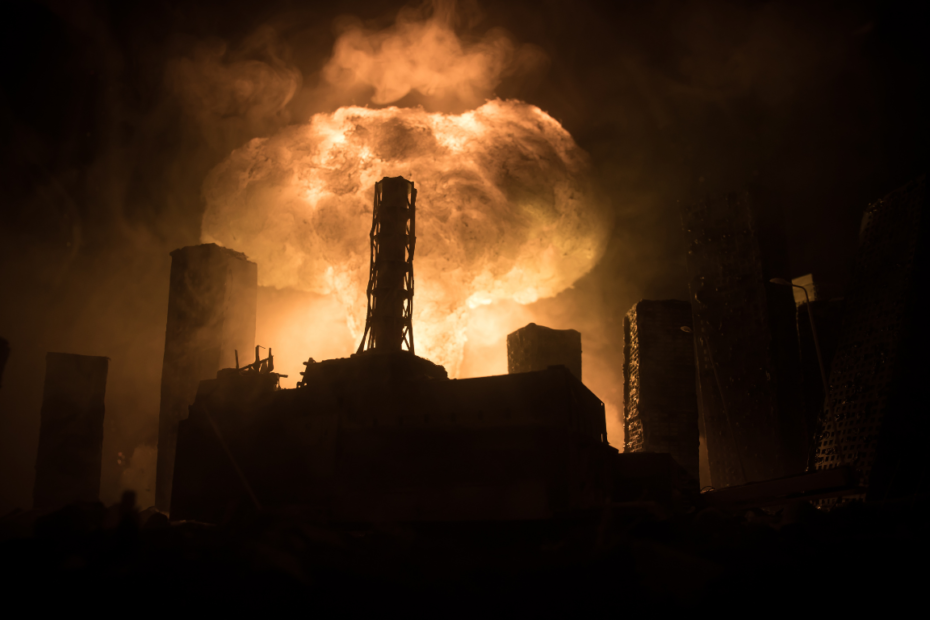In today’s uncertain world, the possibility of nuclear conflict looms as a persistent threat. Preparedness is key to increasing survival chances in such dire circumstances. “Nuclear War Survival Skills” by Cresson Kearny provides invaluable guidance on how to navigate and survive in the aftermath of a nuclear war. In this blog post, we’ll explore some of the essential survival skills outlined in Kearny’s book, offering readers an understanding of what it takes to endure and thrive amidst nuclear devastation.
Addressing Fear and Uncertainty in Nuclear Conflict

Anticipating the Unknown: Things to Consider
- Understanding nuclear weapon dangers and human responses to war boosts survival odds.
- Potential Terror: Unexpected danger can lead to self-destructive emotions like terror.
- Environmental Effects: Massive dust clouds from nuclear blasts may occur, potentially turning day into night.
- Environmental Changes: Expect thunder, shaking earth, and artificial auroras caused by nuclear explosions.
- Psychological Preparedness: Knowing about these phenomena in advance can help individuals maintain hope and endurance.
Embracing Fear
- Fear, in dire circumstances, can serve as a catalyst, propelling individuals to exert themselves and achieve extraordinary feats.
- Acknowledging and confronting fear, even in seemingly distant peril, empowers individuals to strategize and mitigate risks proactively.
Confronting Terror
- Extreme situations may induce terror, impairing rational thought and triggering either apathy or an instinctual flight response.
- Insight into human behavior and recognizing the symptoms of terror can equip individuals to maintain composure and efficacy during crises. Understand there will be a terror response but you need to compose yourself to be able to think clearly.
Navigating Emotional Paralysis
- Confronted with grave danger, individuals may experience emotional paralysis, numbing their reactions and facilitating a focused response.
- This adaptive mechanism allows individuals to concentrate on survival tasks without being overwhelmed by intense emotions.
Adapting Traditional Survival Skills to the Nuclear War Landscape
In the context of a nuclear war scenario, many basic survival skills remain applicable, albeit with a heightened sense of urgency and specific considerations. Skills such as shelter construction, water purification, and first aid retain their importance, offering crucial means of protection and sustenance.
However, additional preparations are necessary to contend with the unique challenges posed by nuclear fallout. Understanding radiation protection measures, such as sheltering from fallout and purifying contaminated water, becomes paramount. Moreover, individuals must learn to anticipate and manage the psychological impact of fear and terror, ensuring a resilient mindset amidst uncertainty. By integrating traditional survival skills with these new considerations, individuals can enhance their readiness to navigate the complexities of a post-nuclear world.
Radiation Protection

- Shielding oneself from radiation is not a matter of choice but necessity. Understanding methods such as sheltering, distance maintenance, and improvised shielding can significantly mitigate the pernicious effects of radiation exposure. To delve deeper into radiation protection strategies, consider exploring additional resources like Alive After The Fall.This guide is a complete program that gives you great strategies to survive catastrophes such as nuclear and chemical attacks.
Shelter Is Crucial
In the wake of a nuclear blast, the ability to fashion shelters from meager resources becomes a lifeline. These shelters, constructed from everyday materials, offer a sanctuary from the relentless onslaught of fallout radiation.

1. Expedient Shelter: In urgent situations, it’s vital to swiftly find or create a simple shelter for protection against fallout radiation. This could involve taking cover in a basement, digging an underground trench, or utilizing any structure providing substantial shielding from radioactive fallout.
2. Home Fallout Shelter: A home fallout shelter is a fortified area within a residential structure, such as a basement, designed to provide protection against nuclear fallout. It involves reinforcing walls and ceilings with materials like sandbags or earth to shield occupants from radiation. These shelters are crucial for safeguarding individuals and families during nuclear emergencies.
3. Family Fallout Shelter: A family fallout shelter is a fortified space designed to protect an entire family from the effects of nuclear fallout during emergencies. Typically located within or near a residence, it includes reinforced walls, ventilation systems, and provisions for food, water, and sanitation to sustain occupants for an extended period. These shelters are essential for ensuring the safety and survival of families in the event of a nuclear attack.
4. Community Fallout Shelter: The concept of community fallout shelters is a large-scale facility capable of sheltering a significant number of people during a nuclear emergency. These shelters may be strategically located in public buildings such as schools, government facilities, or purpose-built underground bunkers.
Emergency Water Purification
In the absence of uncontaminated water sources, the ability to purify contaminated water becomes paramount. Mastery of techniques like boiling, filtration, and chemical treatment ensures access to life-sustaining hydration. If you want to learn ways to purify water check out our blog post “How to Purify Water in Survival: Essential Techniques for Clean Drinking Water”
Food Storage and Preservation
- Prioritizing the accumulation and preservation of food is vital for enduring any crisis. Familiarizing oneself with proper storage methods and preservation techniques such as canning and dehydration isn’t just sensible; it’s essential. Being prepared in advance for any crisis is undeniably the best option. If you want to learn more on food preservation tips check out our blog “Survival Foods With a Long Shelf Life: Top 10 Enduring Foods To Add To Your Survival Pantry” . Cresson Kearny also outlines many methods of food preservation in his book “Nuclear War Survival Skills”
Fire Making
- Fire isn’t merely about warmth; it’s a symbol of resilience amidst adversity. Proficiency in fire-starting methods, whether through traditional friction techniques or modern tools like flint and steel, is indispensable for survival. Even in the aftermath of a nuclear war, the reliability of our fire-making skills endures. Beyond providing warmth, fire serves crucial roles such as purifying water, cooking food, and illuminating darkness, offering essential functions essential for survival in challenging circumstances. You can check out all of the survival tools needed for a bug out bag in our blog post “Bug Out Bag Supplies – Basic Supplies for Your Emergency Kit” . This post outlines supplies needed for a bug out bag on a budget.

Emergency Medical Care
- Injuries and illnesses often accompany the aftermath of disasters. Acquiring fundamental medical skills is crucial, ranging from basic first aid techniques to recognizing and addressing radiation-related conditions. This knowledge becomes an invaluable asset in the fight for survival, enabling individuals to provide essential medical care when access to professional assistance may be limited.
Navigation
- In the aftermath of a nuclear war, the landscape can become unrecognizable, with landmarks obliterated and traditional routes impassable. Knowing how to navigate becomes a critical skill for finding safe havens, avoiding hazards, and locating essential resources such as food, water, and medical supplies. Carrying tools like a reliable compass and detailed maps becomes indispensable, offering a means to orient oneself and plot the safest course through the chaos.
Communication
- In the event of nuclear catastrophe, isolation is not an option. Establishing effective communication channels becomes paramount for fostering cooperation and collective resilience dealing with adversity. Carrying essential communication tools such as radios and signaling devices ensures the ability to coordinate with others, share vital information, and seek assistance when needed. By combining navigation skills with robust communication methods, individuals can enhance their chances of survival and strengthen community bonds in the aftermath of a nuclear war.
Conclusion
In the uncertain landscape of a nuclear war, the importance of nuclear war survival skills cannot be overstated. From mastering the art of shelter construction to securing clean water and food supplies, preparedness is paramount. While the prospect of such a catastrophic event may seem daunting, arming oneself with the knowledge and tools outlined in resources like “Nuclear War Survival Skills” by Cresson Kearny can provide a sense of empowerment and readiness. By taking proactive steps to acquire essential survival skills, individuals can increase their chances of resilience and safety in the face of unimaginable challenges. As we navigate the complexities of our world, let us not overlook the importance of being prepared for the worst while hoping for the best.
